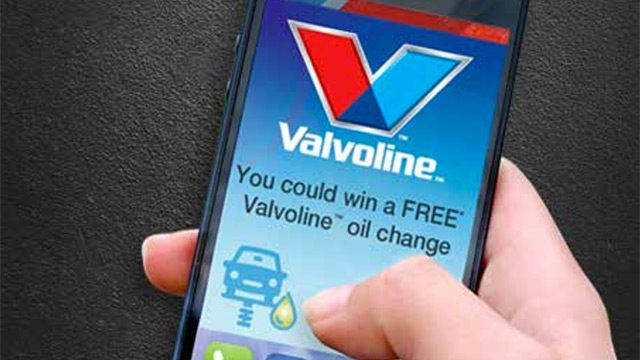Last year, CheapCarInsurance.com conducted a survey to see how adept Americans were at auto repair—basic stuff like knowing how to change a flat tire or knowing the difference between a carburetor and an AC compressor. The results were pretty dismal. Among the findings: When it came to a procedure as straightforward as changing the car’s oil, 23 percent of respondents said they were “not very confident” they could do it, while 36 percent flat-out admitted they were “clueless.”
Blame the times we live in. Dwindling are the days that most motorists bought their favorite brand of 10W40 at the local auto-parts store. Thanks to the increasing prevalence of cars made without user-serviceable engines and the rise of the service economy, the good, old-fashioned oil change—once a father-and-son driveway tradition—is increasingly a transaction that happens at one of those quick-lube joints.
No brand knows this better than 150-year-old Valvoline, which has just launched a new initiative designed to reach out to all those motorists pulling into those lube joints. The program—called Valvoline Drives—is a web-based coupon promotion that furnishes discounts proportionate to customer loyalty.
Anna Broudy, Valvoline’s associate trade marketing manager, says a growing number of the brand’s customers fall into the DIFM (“do it for me”) category. When it’s time for an oil change, they’d rather zip into a service center and not get their hands dirty. But “that’s a step between us and the consumer,” she explains, one complicated by the fact that many service centers stock multiple brands of motor oil. “We had to find out how to get them to the locations flying the Valvoline flag,” she said. “It’s about how we get them to ask for Valvoline.”

Valvoline Drives works as follows: A customer who’s in an auto service center (say, to get new tires) sees a Valvoline’s in-store display dangling the chance to win a free oil change by registering at the Valvoline Drives microsite. (The motorist can also enter a short code to get a link to the site and register that way.)
Once the driver signs up, Valvoline begins to woo him with coupons sent via text or email. The first coupon offers $7.50 off a Valvoline oil change. If he goes for it, Valvoline sends him a coupon for $10 off the next oil change. The longer a registrant sticks with the program, the more he gets. The site also encourages drivers to sign up their friends, which increases their own rewards. The discounts are good only for 150 days, and Valvoline Drives uses a countdown clock to remind motorists at 60 and 30 days out to redeem their coupons.
Russell Zack, svp of products and solutions at HelloWorld, the digital-marketing solutions firm that engineered the promotion, explains that while coupons and incentives are nothing new in retail, it’s the digitally driven, incentivized approach that distinguishes this effort. “You see a lot of one-time promotions and offers in the market,” Zack said, “but we wanted to do something that engages with customers with offers over time, and as you go down through time, they get increasingly better.”
Despite the fact that Americans are growing increasingly inept at servicing their own cars, Valvoline the brand isn’t struggling. The company reported an 11 percent increase in net income for the first quarter of the year and, in addition to selling motor oil, Valvoline operates over 1,070 of its own instant oil-change centers in the U.S. (Sales at those stores grew 9 percent for the quarter.)
Even so, the obvious hurdle for Valvoline is that it’s up against the discounts offered by competing oil-change places (both chains and mom-and-pop garages) and the propensity of some motorists to drive into the shop with the cheapest oil change, brand be damned.
“The challenge the brand faces is getting someone to pick them over the myriad other places,” said marketing analyst, advisor and author Rebecca Lieb. Valvoline’s Broudy concedes that there are many motorists who “don’t know what type of oil is being used in their cars,” as well as those who’ll simply choose the cheapest offer they can find.
Even so, Lieb says, Valvoline’s tactic is a sensible one. “They’ve thought it through well in terms of offering coupons and discounts, putting a time limit on them and encouraging sharing,” she said. “It’s obvious the brand is trying to incentivize business as much as they possibly can.”
And with 60 percent of Americans either not confident or utterly clueless about how to change their own oil, the opportunity is certainly there.








